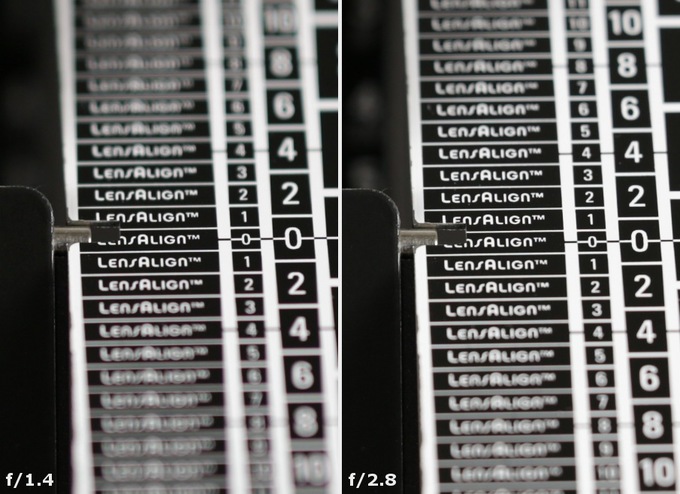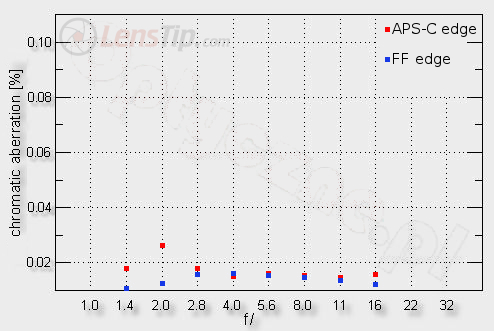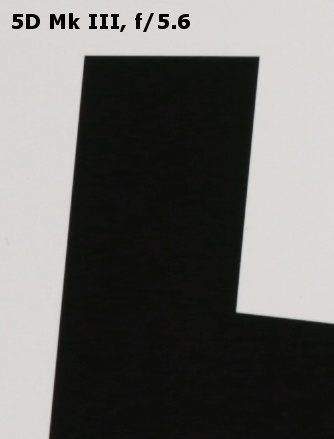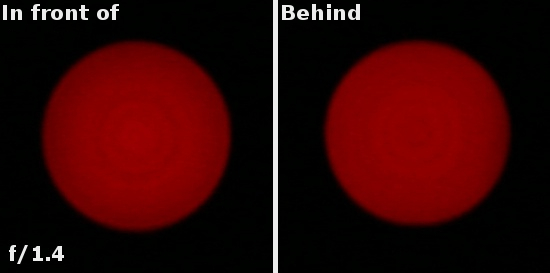Carl Zeiss Otus 85 mm f/1.4
5. Chromatic and spherical aberration
The name of the tested lens features an APO element which suggest an apochromat, able to correct the chromatic aberration very well. First, let’s check the longitudinal version of that aberration.
 |
Please Support UsIf you enjoy our reviews and articles, and you want us to continue our work please, support our website by donating through PayPal. The funds are going to be used for paying our editorial team, renting servers, and equipping our testing studio; only that way we will be able to continue providing you interesting content for free. |
- - - - - - - - - - - - - - - - - - - - - - - - - - - - - - - - - - - - - - - - - - - - - - - -
A very delicate cast of images in front of and behind the focus is noticeable only near the maximum relative aperture; by f/2.8 that effect disappears completely. Taking into account the fact how difficult it is for an 1.4/85 lens to correct such an aberration, the Otus should be definitely praised here.
The lateral chromatic aberration deserves even more praise – its correlation with the aperture values on both types of detectors is presented on a graph below.

The aberration is simply unnoticeable, no matter what aperture and what sensor you use. A round of applause!
 |
Spherical aberration
The spherical aberration correction of the Zeiss Otus 1.4/85 is excellent as well. The lens doesn’t have any ‘focus shift’ effect and defocused light circles you get in front of and behind the focus don’t differ from each other at all - you can notice it well in the following crops.







